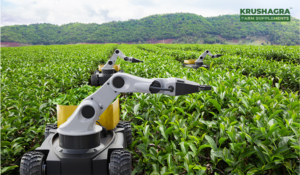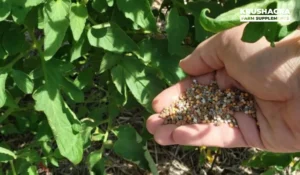Introduction
In the world of modern agriculture, the quest for sustainable pest management practices has gained significant traction. As concerns about environmental impact, food safety, and the long-term health of ecosystems continue to grow, the role of biopesticides has emerged as a pivotal solution. Biopesticides, derived from natural sources, offer a promising pathway towards sustainable pest control in field crop production. This article delves into the multifaceted benefits and strategic integration of biopesticides as a cornerstone of sustainable pest management.
- Environmental Safety: One of the primary benefits of biopesticides is their reduced impact on the environment compared to synthetic chemical pesticides. Biopesticides are often target-specific, meaning they affect only the pest species they are intended for, while leaving non-target organisms unharmed. This minimizes the disruption to the ecosystem and helps preserve beneficial insects, pollinators, and other organisms essential for natural pest control.
- Low Toxicity to Non-Target Organisms: Biopesticides are generally less toxic to humans, animals, and beneficial insects. This makes them a safer option for field workers, consumers, and the overall ecosystem.
- Reduced Residue Levels: Biopesticides often break down more rapidly in the environment compared to synthetic chemicals, leading to lower residue levels on crops. This is particularly important for maintaining food safety and meeting regulatory standards for pesticide residues.
- Resistance Management: Continuous and excessive use of synthetic pesticides can lead to the development of pest resistance. Biopesticides can be integrated into pest management programs to help delay the development of resistance. By using a variety of control methods, including biopesticides, farmers can reduce the selection pressure on pest populations and prolong the effectiveness of the pest control measures.
- Compatibility with Integrated Pest Management (IPM): Biopesticides are a key component of Integrated Pest Management, a holistic approach that combines various pest control strategies to maintain pest populations below economically damaging levels. Biopesticides can be used alongside cultural practices, biological control agents, and other techniques to create a balanced and sustainable pest management system.
- Shorter Pre-Harvest Intervals (PHIs): Many biopesticides have shorter pre-harvest intervals, which is the time that must pass between the last pesticide application and harvest. This can provide more flexibility in pest management planning and reduce the risk of residues exceeding permissible levels.
- Market Demand for Safer Produce: Consumers are increasingly concerned about the safety of the food they consume. As a result, there is a growing demand for produce that has been grown with reduced chemical inputs. Biopesticides can help farmers meet this demand by providing a more environmentally friendly option for pest control.
- Supporting Organic Farming: Biopesticides are an important tool for organic farmers, who are restricted in their use of synthetic chemicals. These natural products align well with organic farming principles and can be integrated into organic pest management strategies.
- Soil and Ecosystem Health:Biopesticides promote soil and ecosystem health. Unlike chemical alternatives, they minimize disruption to soil microbiota and beneficial organisms. Certain biopesticides, especially those based on beneficial microbes, bolster soil health by fostering a balanced microbiome that enhances nutrient cycling and disease resistance. This contributes to improved crop growth and long-term sustainability.
- Economic Viability:Biopesticides offer economic advantages to farmers over time. Despite slightly higher initial costs, they lead to balanced ecosystems, reduced chemical inputs, and prolonged pest control effectiveness. This translates to higher yields and decreased production expenses. Furthermore, as consumer demand for pesticide-reduced produce grows, farmers using biopesticides can tap into premium markets.
- Research and Innovation:Biopesticides drive research and innovation in pest management. Ongoing exploration of natural compounds, microorganisms, and biotechnology yields novel biopesticide solutions. This not only advances pest control but also propels sustainable agricultural practices forward. The evolution of biopesticides aligns with the global shift toward eco-friendly technologies, shaping a greener future.
Conclusion
In the grand tapestry of modern agriculture, where sustainability is the golden thread, biopesticides shine as a beacon of hope. Their eco-friendly attributes, low toxicity, and capacity to foster integrated, diverse pest management strategies position them as a linchpin in the pursuit of sustainable field crop production. As we traverse the landscape of evolving agricultural practices, the significance of biopesticides in safeguarding both crops and ecosystems remains resolute—a testament to the power of harnessing nature’s wisdom for a brighter agricultural future.






